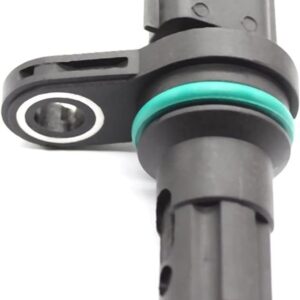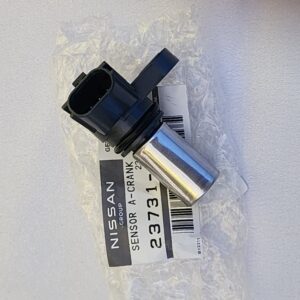Title: Understanding the Transmission Speed Sensor: A Vital Component for Smooth Shifting
In the intricate machinery of automotive transmissions, where precision and timing are paramount, the transmission speed sensor emerges as a silent yet indispensable component, facilitating smooth shifting and efficient operation. Despite its modest size, this unassuming sensor plays a pivotal role in monitoring vehicle speed, enabling accurate gear selection, and optimizing transmission performance. In this blog, we’ll delve into the significance of the transmission speed sensor, how it works, its importance in transmission operation, and its indispensable contribution to the driving experience.
### Unveiling the Transmission Speed Sensor
The transmission speed sensor, also known as the vehicle speed sensor (VSS) or output speed sensor, is a critical component of modern automatic transmissions. Positioned within or near the transmission housing, its primary function is to monitor the rotational speed of the transmission output shaft.
### How the Transmission Speed Sensor Works
The transmission speed sensor operates using various technologies, including magnetic reluctance, Hall effect, or optical sensors. Regardless of the method used, the basic principle remains the same: the sensor detects the rotation of gears or tone rings on the transmission output shaft and generates electrical signals proportional to vehicle speed. These signals are then transmitted to the engine control unit (ECU) or transmission control module (TCM), where they are used to determine shift points, control torque converter lockup, and adjust transmission operation.
### Importance of the Transmission Speed Sensor in Transmission Operation
1. **Accurate Gear Selection**: The transmission speed sensor provides real-time data on vehicle speed to the ECU or TCM, enabling accurate gear selection and smooth shifting. By monitoring vehicle speed, the sensor ensures that the transmission shifts at the appropriate time, maximizing performance and efficiency under various driving conditions.
2. **Torque Converter Lockup Control**: In automatic transmissions equipped with torque converters, the transmission speed sensor plays a crucial role in controlling torque converter lockup. By monitoring vehicle speed, the sensor allows the ECU or TCM to engage or disengage the lockup clutch at the optimal times, improving fuel efficiency and reducing transmission heat buildup.
3. **Transmission Diagnostics**: The transmission speed sensor also serves as a diagnostic tool for identifying transmission problems. Irregularities in vehicle speed readings, such as erratic fluctuations or loss of signal, may indicate issues such as sensor malfunction, transmission slippage, or gear engagement problems, prompting the ECU or TCM to initiate corrective action or illuminate warning lights on the dashboard.
### Signs of a Failing Transmission Speed Sensor
– **Erratic Shifting**: Erratic shifting behavior, such as harsh shifts, delayed engagement, or failure to shift, may occur if the transmission speed sensor is malfunctioning or sending incorrect signals to the ECU or TCM.
– **Inoperative Speedometer**: A non-functional speedometer or inaccurate speed readings on the dashboard may indicate a problem with the transmission speed sensor or related components.
– **Check Engine Light**: An illuminated check engine light on the dashboard may indicate a fault code related to the transmission speed sensor or its circuitry.
### Conclusion
In the intricate tapestry of transmission operation, the transmission speed sensor stands as a silent sentinel, ensuring smooth shifting and efficient performance with each rotation of the transmission output shaft. From accurate gear selection to torque converter lockup control and transmission diagnostics, its role in shaping transmission operation and reliability is indispensable. As automotive technology continues to advance, the importance of transmission speed sensors in achieving optimal transmission performance remains undeniably critical, ensuring that vehicles navigate the roads with precision, efficiency, and reliability.
In stock (can be backordered)
$29,137.67
Title: Understanding the Transmission Speed Sensor: A Vital Component for Smooth Shifting
In the intricate machinery of automotive transmissions, where precision and timing are paramount, the transmission speed sensor emerges as a silent yet indispensable component, facilitating smooth shifting and efficient operation. Despite its modest size, this unassuming sensor plays a pivotal role in monitoring vehicle speed, enabling accurate gear selection, and optimizing transmission performance. In this blog, we’ll delve into the significance of the transmission speed sensor, how it works, its importance in transmission operation, and its indispensable contribution to the driving experience.
### Unveiling the Transmission Speed Sensor
The transmission speed sensor, also known as the vehicle speed sensor (VSS) or output speed sensor, is a critical component of modern automatic transmissions. Positioned within or near the transmission housing, its primary function is to monitor the rotational speed of the transmission output shaft.
### How the Transmission Speed Sensor Works
The transmission speed sensor operates using various technologies, including magnetic reluctance, Hall effect, or optical sensors. Regardless of the method used, the basic principle remains the same: the sensor detects the rotation of gears or tone rings on the transmission output shaft and generates electrical signals proportional to vehicle speed. These signals are then transmitted to the engine control unit (ECU) or transmission control module (TCM), where they are used to determine shift points, control torque converter lockup, and adjust transmission operation.
### Importance of the Transmission Speed Sensor in Transmission Operation
1. **Accurate Gear Selection**: The transmission speed sensor provides real-time data on vehicle speed to the ECU or TCM, enabling accurate gear selection and smooth shifting. By monitoring vehicle speed, the sensor ensures that the transmission shifts at the appropriate time, maximizing performance and efficiency under various driving conditions.
2. **Torque Converter Lockup Control**: In automatic transmissions equipped with torque converters, the transmission speed sensor plays a crucial role in controlling torque converter lockup. By monitoring vehicle speed, the sensor allows the ECU or TCM to engage or disengage the lockup clutch at the optimal times, improving fuel efficiency and reducing transmission heat buildup.
3. **Transmission Diagnostics**: The transmission speed sensor also serves as a diagnostic tool for identifying transmission problems. Irregularities in vehicle speed readings, such as erratic fluctuations or loss of signal, may indicate issues such as sensor malfunction, transmission slippage, or gear engagement problems, prompting the ECU or TCM to initiate corrective action or illuminate warning lights on the dashboard.
### Signs of a Failing Transmission Speed Sensor
– **Erratic Shifting**: Erratic shifting behavior, such as harsh shifts, delayed engagement, or failure to shift, may occur if the transmission speed sensor is malfunctioning or sending incorrect signals to the ECU or TCM.
– **Inoperative Speedometer**: A non-functional speedometer or inaccurate speed readings on the dashboard may indicate a problem with the transmission speed sensor or related components.
– **Check Engine Light**: An illuminated check engine light on the dashboard may indicate a fault code related to the transmission speed sensor or its circuitry.
### Conclusion
In the intricate tapestry of transmission operation, the transmission speed sensor stands as a silent sentinel, ensuring smooth shifting and efficient performance with each rotation of the transmission output shaft. From accurate gear selection to torque converter lockup control and transmission diagnostics, its role in shaping transmission operation and reliability is indispensable. As automotive technology continues to advance, the importance of transmission speed sensors in achieving optimal transmission performance remains undeniably critical, ensuring that vehicles navigate the roads with precision, efficiency, and reliability.
| Weight | 0.05 kg |
|---|---|
| Warehouse | Inventory at warehouse 2 |


Get E-mail updates about our latest products and special offers.
Sensors and More is Jamaica’s ultimate online auto parts store. Established in 2020, we specialize in genuine electrical parts for Japanese, Read more…
Reviews
There are no reviews yet.